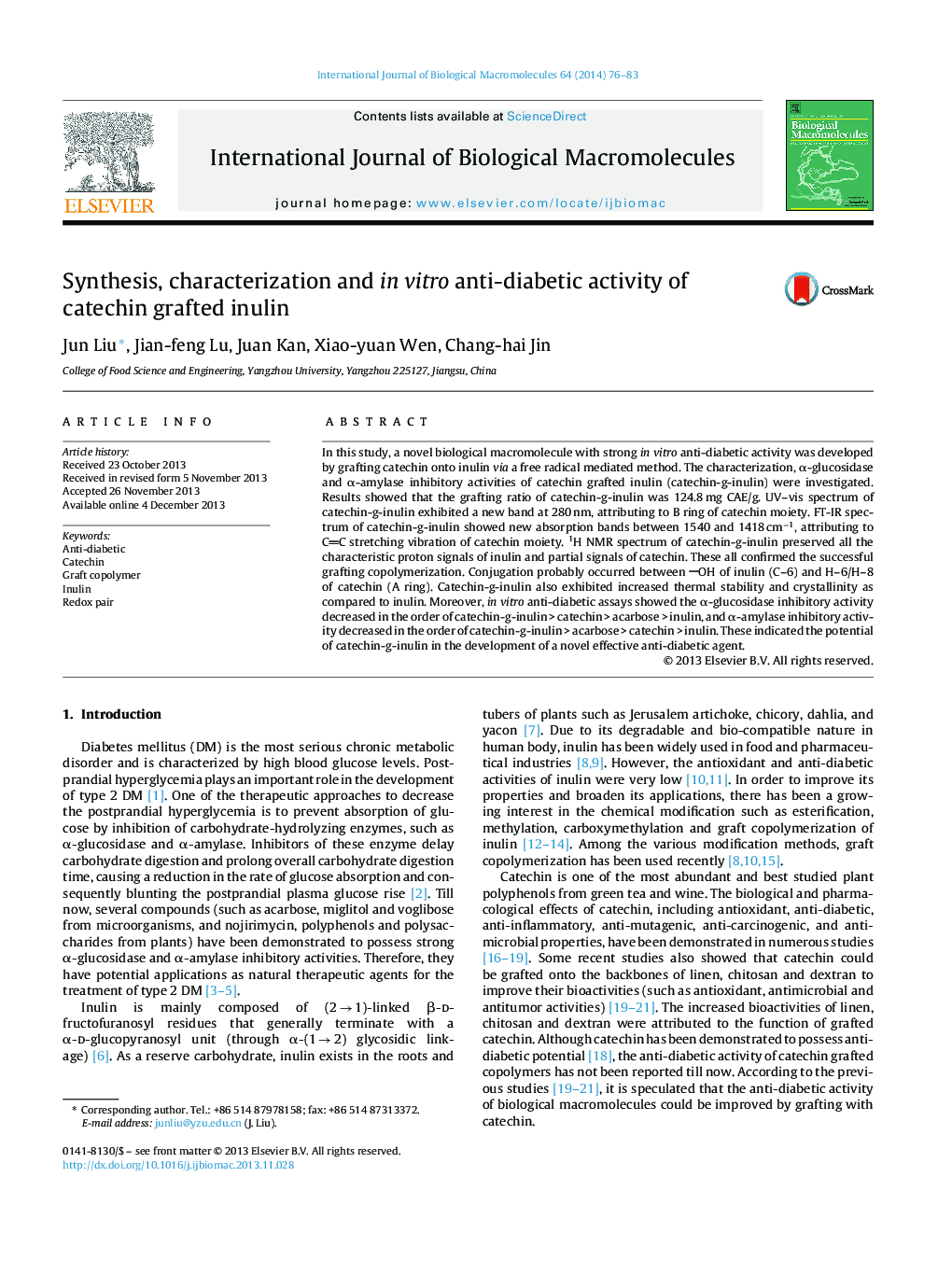| Article ID | Journal | Published Year | Pages | File Type |
|---|---|---|---|---|
| 1986602 | International Journal of Biological Macromolecules | 2014 | 8 Pages |
In this study, a novel biological macromolecule with strong in vitro anti-diabetic activity was developed by grafting catechin onto inulin via a free radical mediated method. The characterization, α-glucosidase and α-amylase inhibitory activities of catechin grafted inulin (catechin-g-inulin) were investigated. Results showed that the grafting ratio of catechin-g-inulin was 124.8 mg CAE/g. UV–vis spectrum of catechin-g-inulin exhibited a new band at 280 nm, attributing to B ring of catechin moiety. FT-IR spectrum of catechin-g-inulin showed new absorption bands between 1540 and 1418 cm−1, attributing to CC stretching vibration of catechin moiety. 1H NMR spectrum of catechin-g-inulin preserved all the characteristic proton signals of inulin and partial signals of catechin. These all confirmed the successful grafting copolymerization. Conjugation probably occurred between OH of inulin (C–6) and H–6/H–8 of catechin (A ring). Catechin-g-inulin also exhibited increased thermal stability and crystallinity as compared to inulin. Moreover, in vitro anti-diabetic assays showed the α-glucosidase inhibitory activity decreased in the order of catechin-g-inulin > catechin > acarbose > inulin, and α-amylase inhibitory activity decreased in the order of catechin-g-inulin > acarbose > catechin > inulin. These indicated the potential of catechin-g-inulin in the development of a novel effective anti-diabetic agent.
